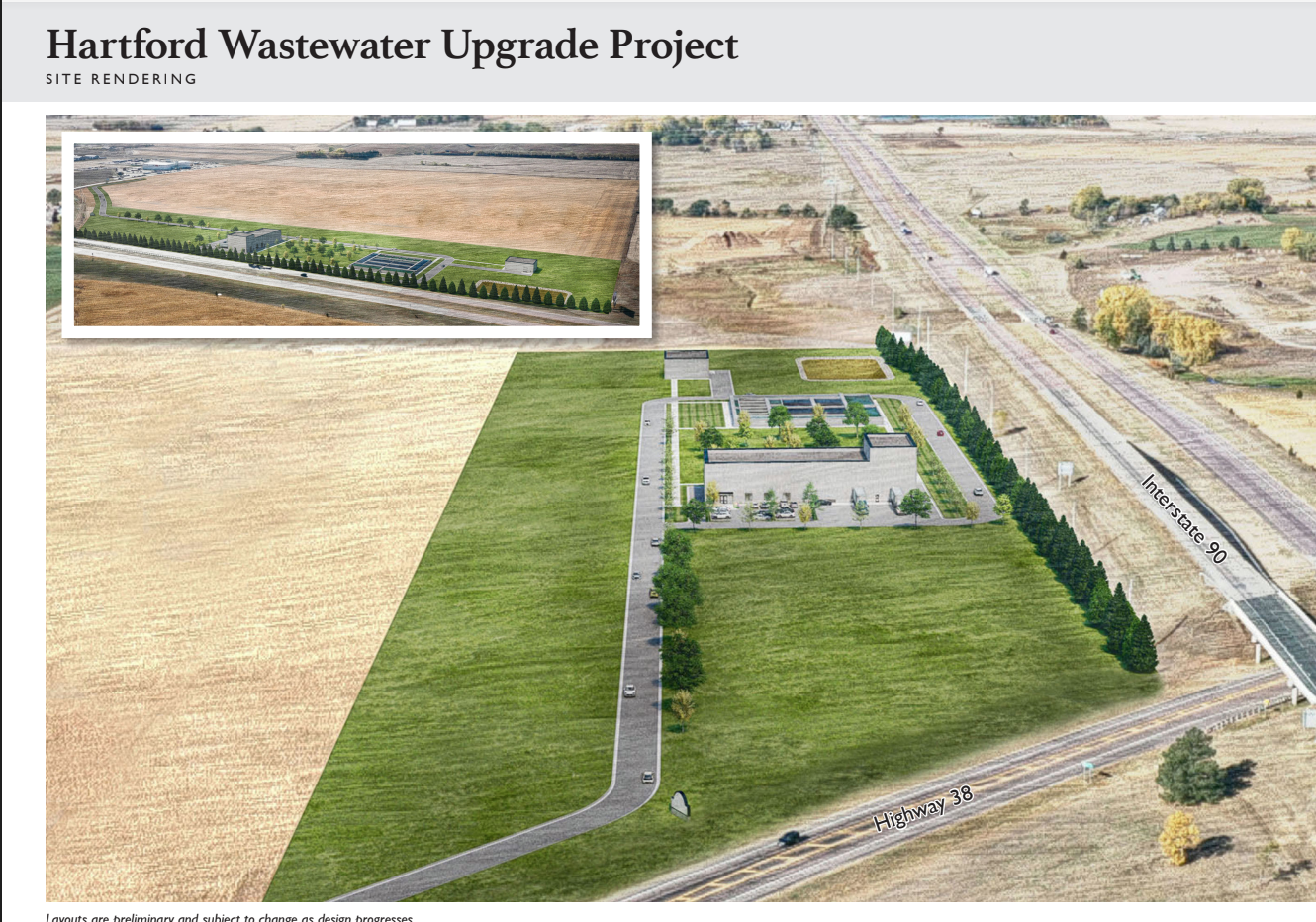This is a paid piece from the Sioux Metro Growth Alliance
Simplified: Hartford needs a new wastewater treatment facility. As it's planning, the city wants to know if neighboring communities would be interested in creating a centralized, regional facility that'll help everyone meet the growing needs for wastewater treatment in the county.
Why it matters
- Wastewater infrastructure is a significant need for communities in the region. Hartford has to find a solution by 2025, and its neighbors in Crooks, Colton, Humboldt and Lyons are also running out of options for expanding wastewater treatment.
- The proposed new treatment facility in Hartford would have the capacity to process 1.56 million gallons of water per day, enough capacity to also help the entire region if nearby towns are interested.
- The challenge to making this project happen will be funding. The estimated cost at this point is about $16.8 million, and there's an additional $10 million cost for conveyance – essentially the cost of moving wastewater from the communities to the treatment facility.
- Jesse Fonkert, president and CEO of the Sioux Metro Growth Alliance, told the County Commission this week about the importance of having the conversations now about regionalizing wastewater treatment. It's an economic development issue, he said.
"If we want to continue to grow, we need to be proactive in facing these issues and finding solutions," Fonkert said, adding that he's seen project pass by the region because of the lack of wastewater treatment capacity.
Tell me more about this proposed regional facility
Conversations about regionalizing wastewater treatment have been going on for years.
- Right now, each community has its own solution, ranging from septic systems to lagoons.
- Across the board, though, it's clear these options won't be able to keep up with the growth Sioux metro communities want to see.
- As these conversations have been happening, there are also conversations at the state and national level about increasing water quality standards, which adds another element of urgency to talking about a regional solution, Fonkert said.
The proposed facility would be located in and owned by the City of Hartford, said Rachel Kloos, wastewater group leader for ISG.
- The plan would be to start construction in late 2023.
What are people saying about this?
Commissioner Gerald Beninga said he sees this facility as something the county should support.
"The county, I think, would have significant growth with property tax values if we were to invest in this project," he said.
Regional leaders also shared their thoughts on the project, including Crooks Mayor Butch Oseby.
"We can't do this by ourselves," Oseby told commissioners. "I really think this is a big, big deal ... I'd really like you to think twice about how we can help find the money."
What happens next?
The next steps for Hartford are to finalize funding sources and begin construction on the new facility.
For SMGA, the next steps are to help communities refine what a regionalized operating agreement might look like, and then see who might be ready to sign on.


